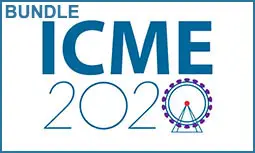Image-based 3D mesh Denoising Through a Block Matching 3D Convolutional Neural Network Filtering Approach
Gerasimos Arvanitis, Aris Lalos, Konstantinos Moustakas
-
Members: FreeSPS
IEEE Members: $11.00
Non-members: $15.00Length: 09:29
08 Jul 2020
Throughout the years, several works have been proposed for
3D mesh denoising. Nevertheless, despite their reconstruction
quality, there are still challenges related to the preservation
of the fine surface features. Motivated by the impressive
results of image denoising by 3D transform-domain collaborative
filtering (CF), we extend it to 3D mesh denoising. CF is
also capable of revealing the finest details shared by grouped
blocks while preserving at the same time the unique features
of each block. A new promising approach suggests unrolling
the computational pipeline of CF into a convolutional neural
network (CNN) structure increasing significantly the efficiency
of this solution. In this paper, we successfully extend
and apply this method to 3D meshes making a transition from
face normals to pixels. Extensive evaluation studies carried
out using a variety of 3D meshes verify that the proposed approach
achieves plausible reconstruction outputs and provides
very promising results.
3D mesh denoising. Nevertheless, despite their reconstruction
quality, there are still challenges related to the preservation
of the fine surface features. Motivated by the impressive
results of image denoising by 3D transform-domain collaborative
filtering (CF), we extend it to 3D mesh denoising. CF is
also capable of revealing the finest details shared by grouped
blocks while preserving at the same time the unique features
of each block. A new promising approach suggests unrolling
the computational pipeline of CF into a convolutional neural
network (CNN) structure increasing significantly the efficiency
of this solution. In this paper, we successfully extend
and apply this method to 3D meshes making a transition from
face normals to pixels. Extensive evaluation studies carried
out using a variety of 3D meshes verify that the proposed approach
achieves plausible reconstruction outputs and provides
very promising results.



